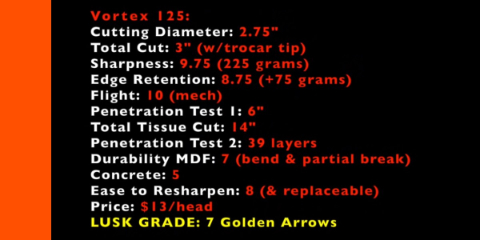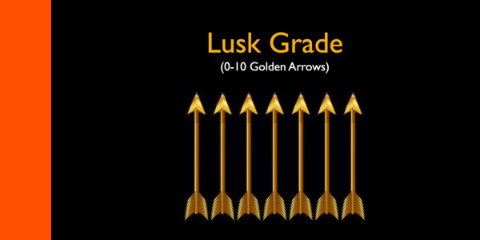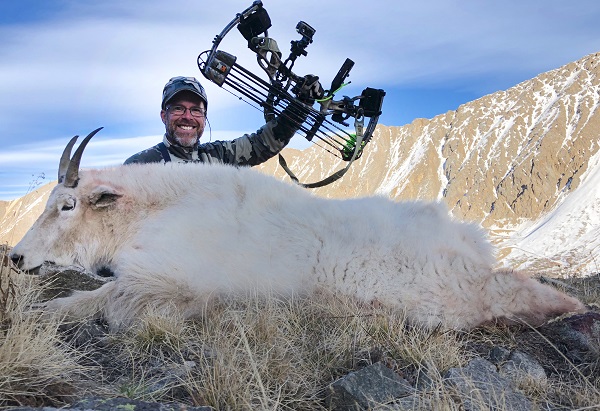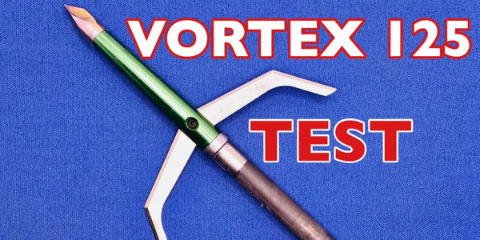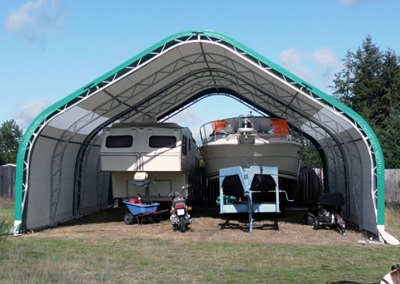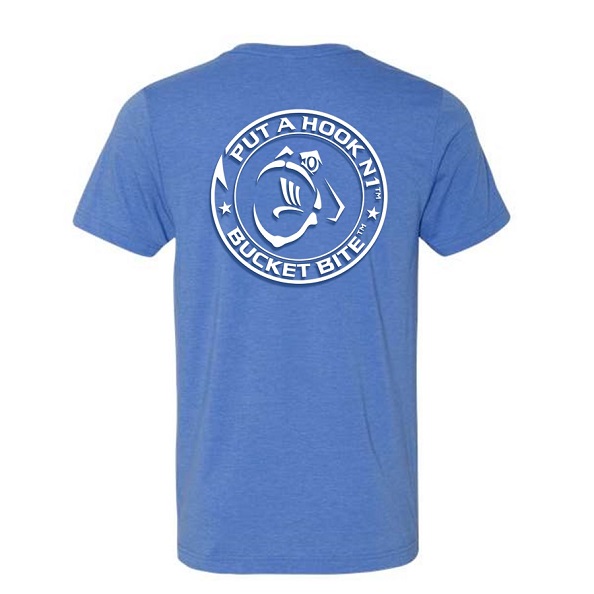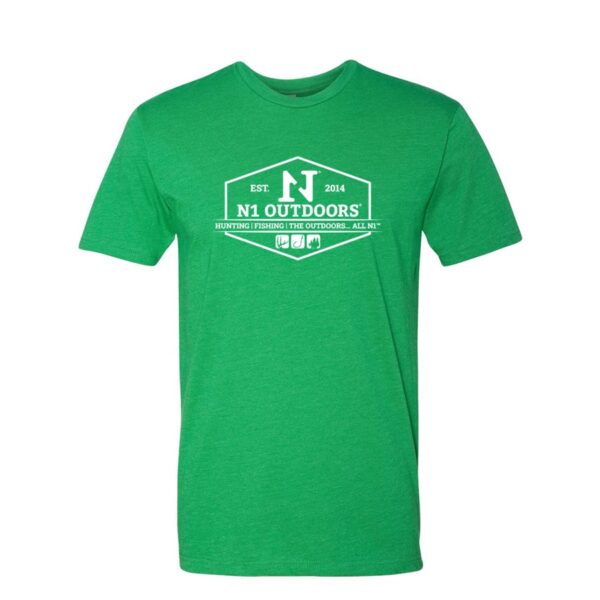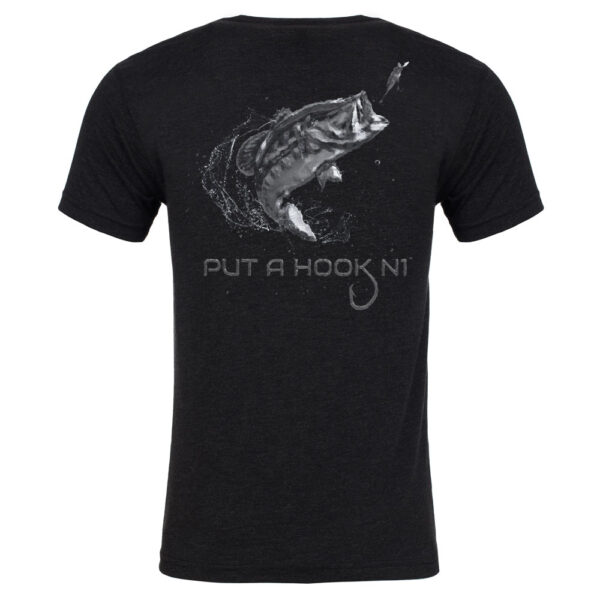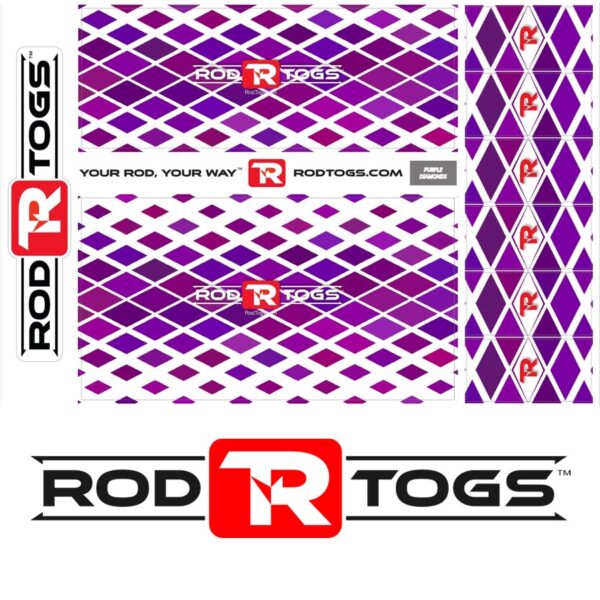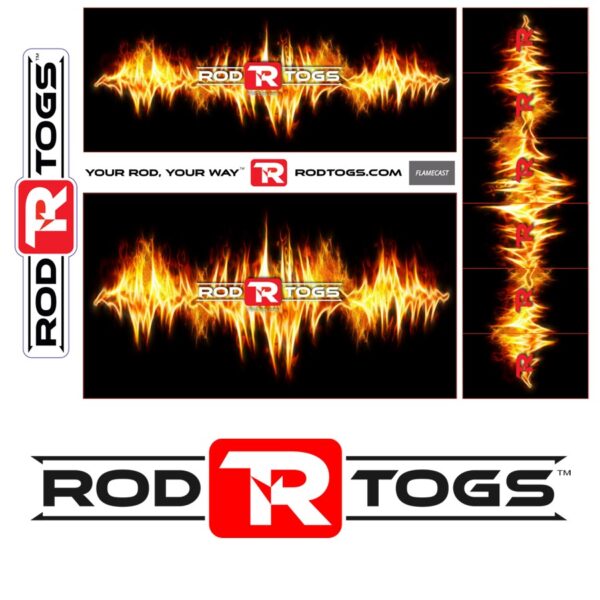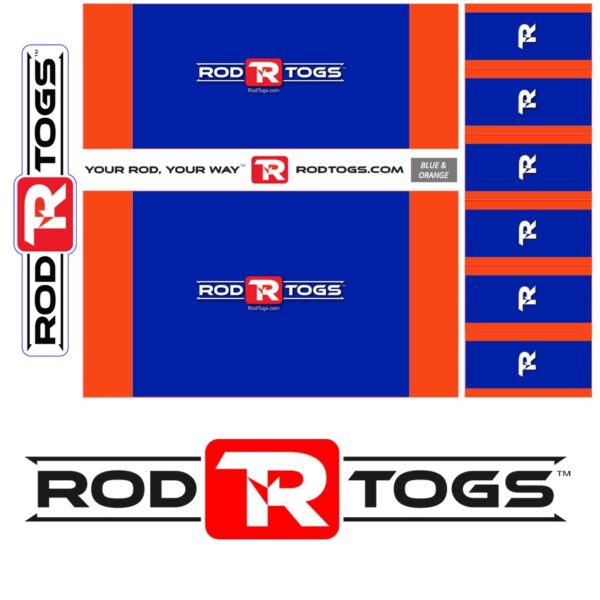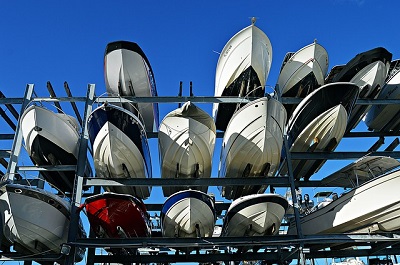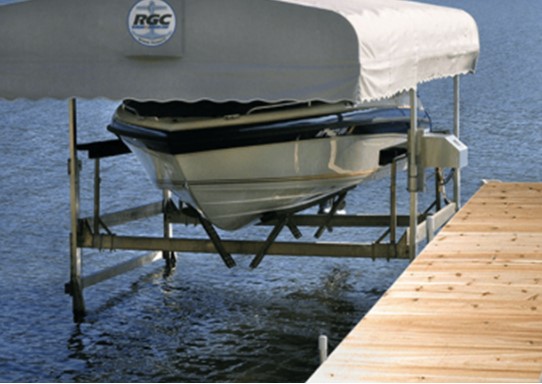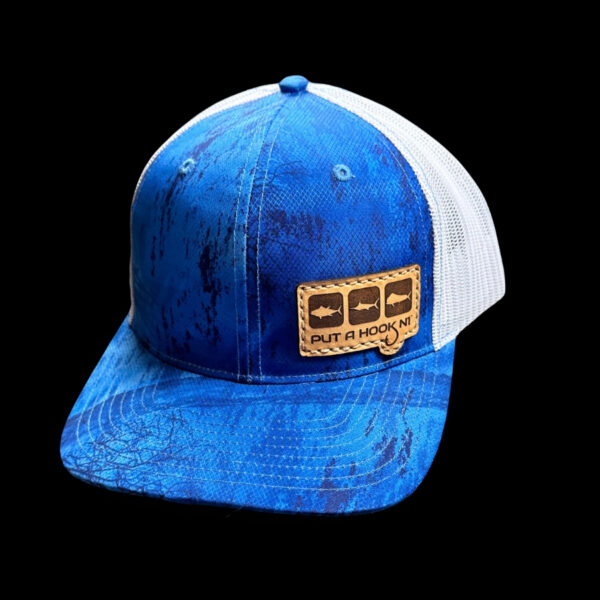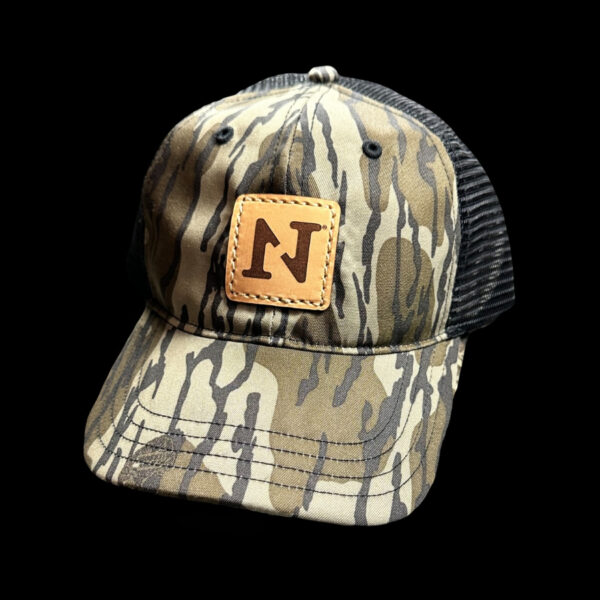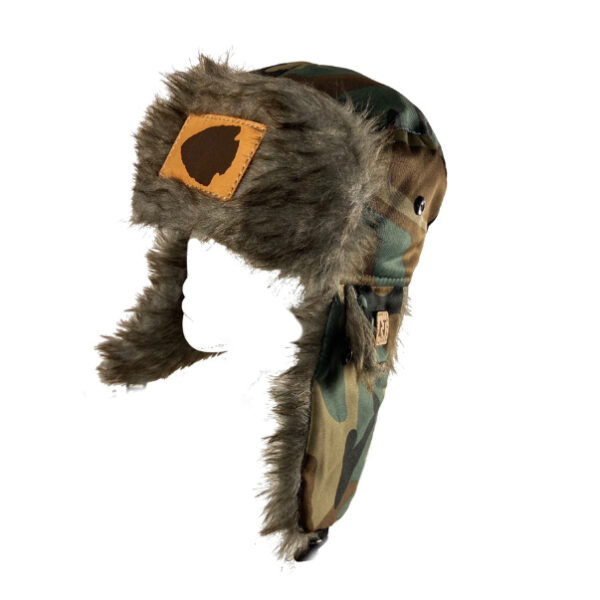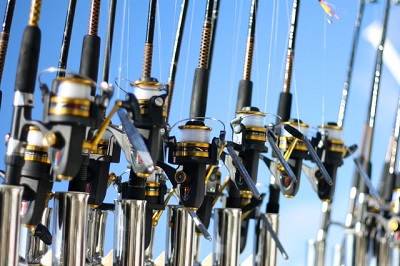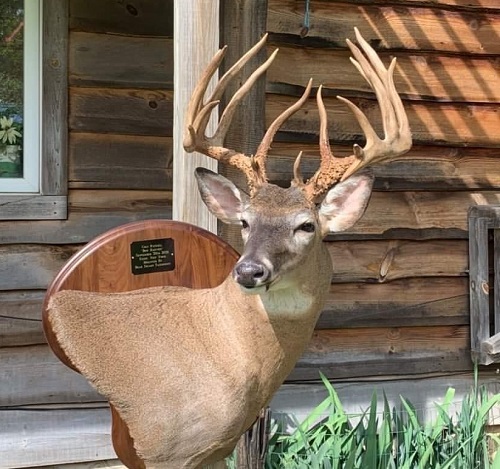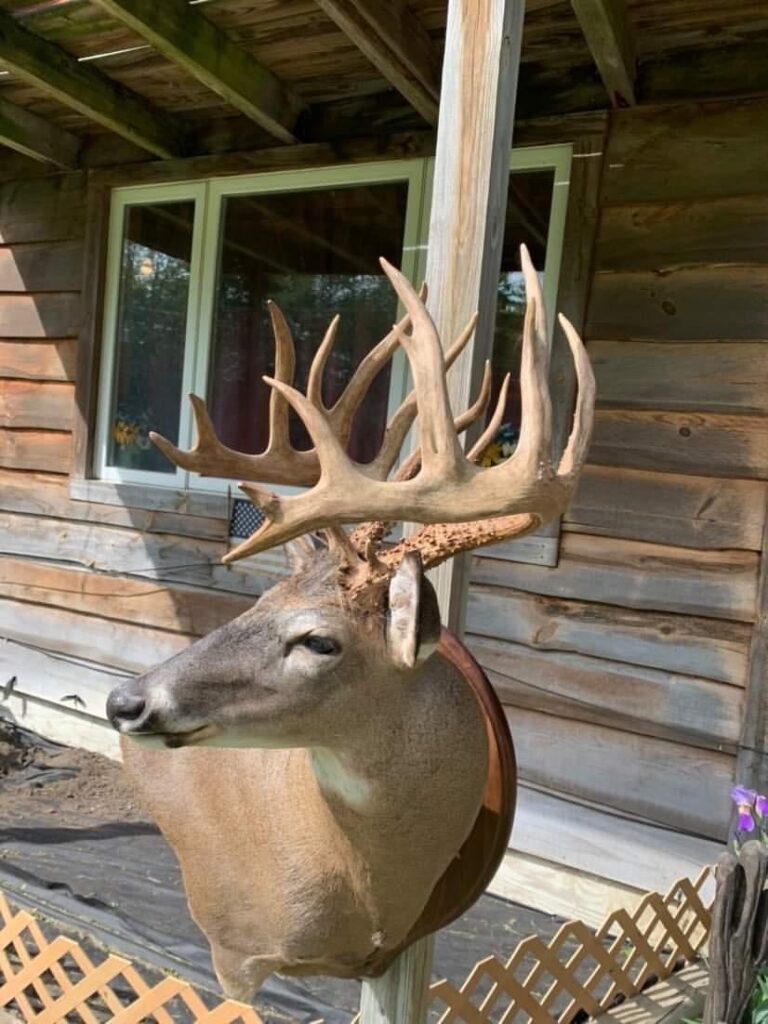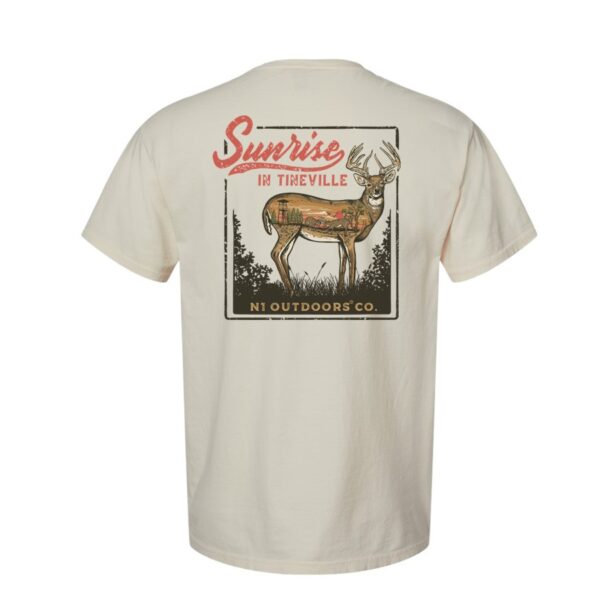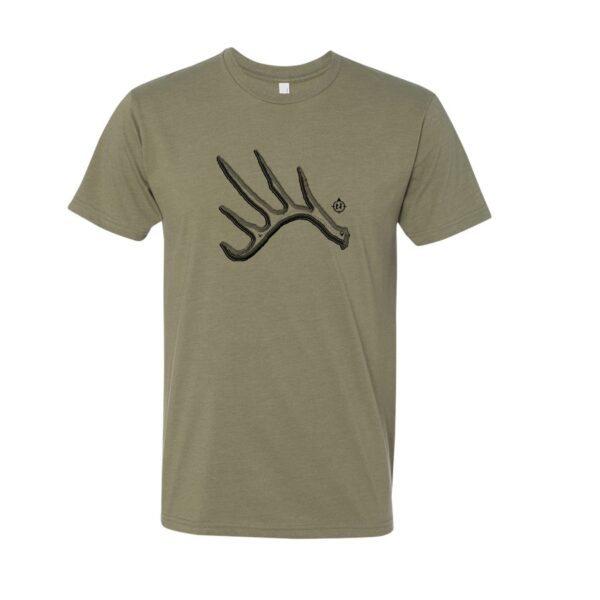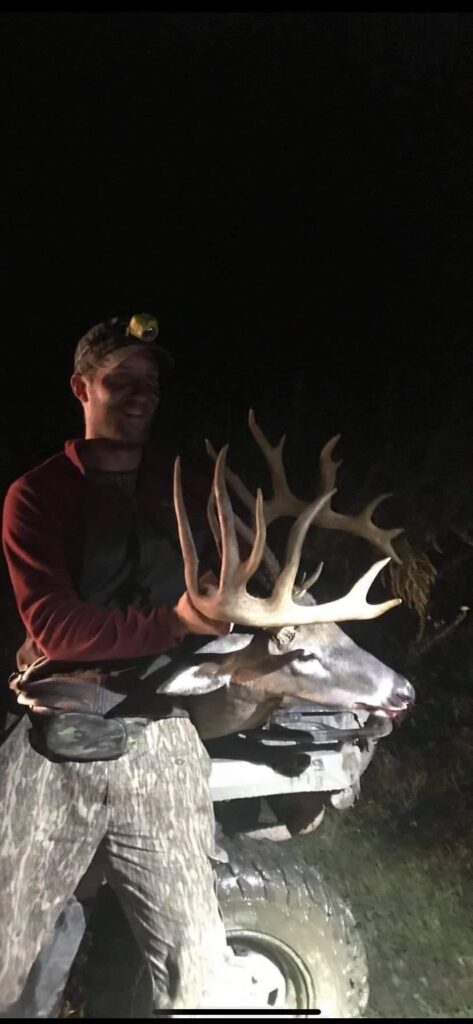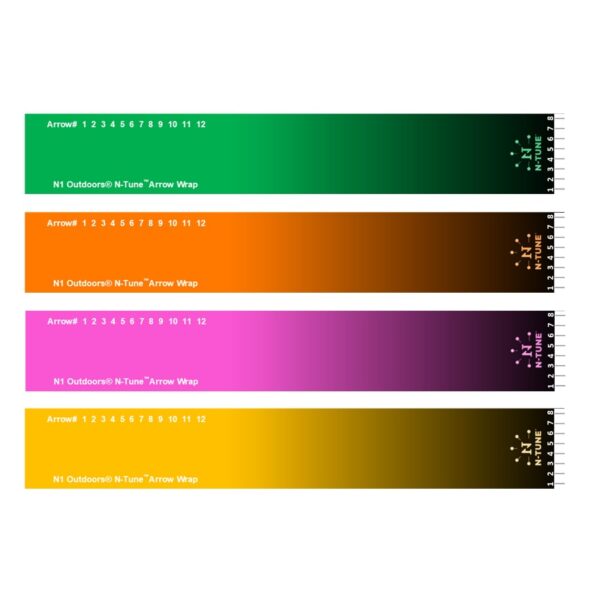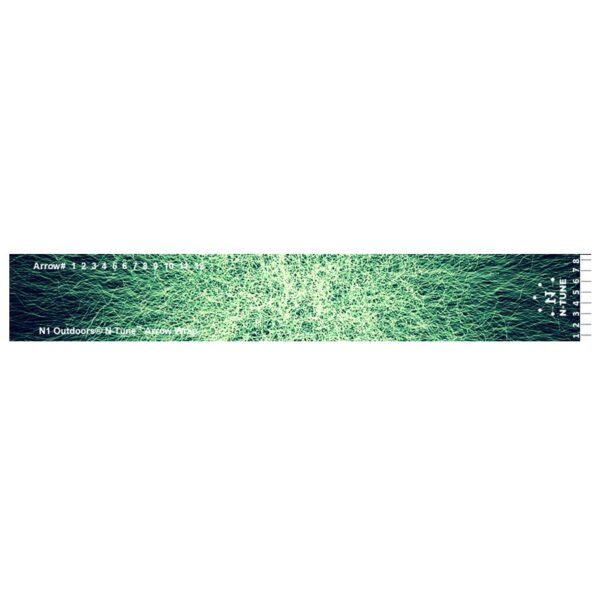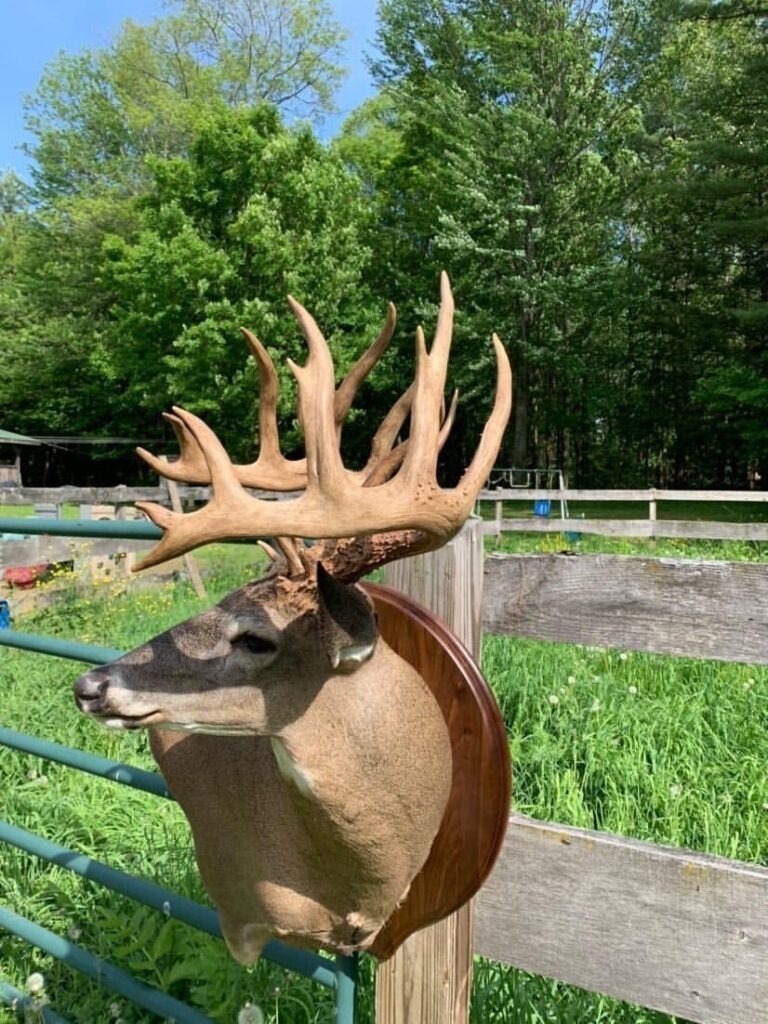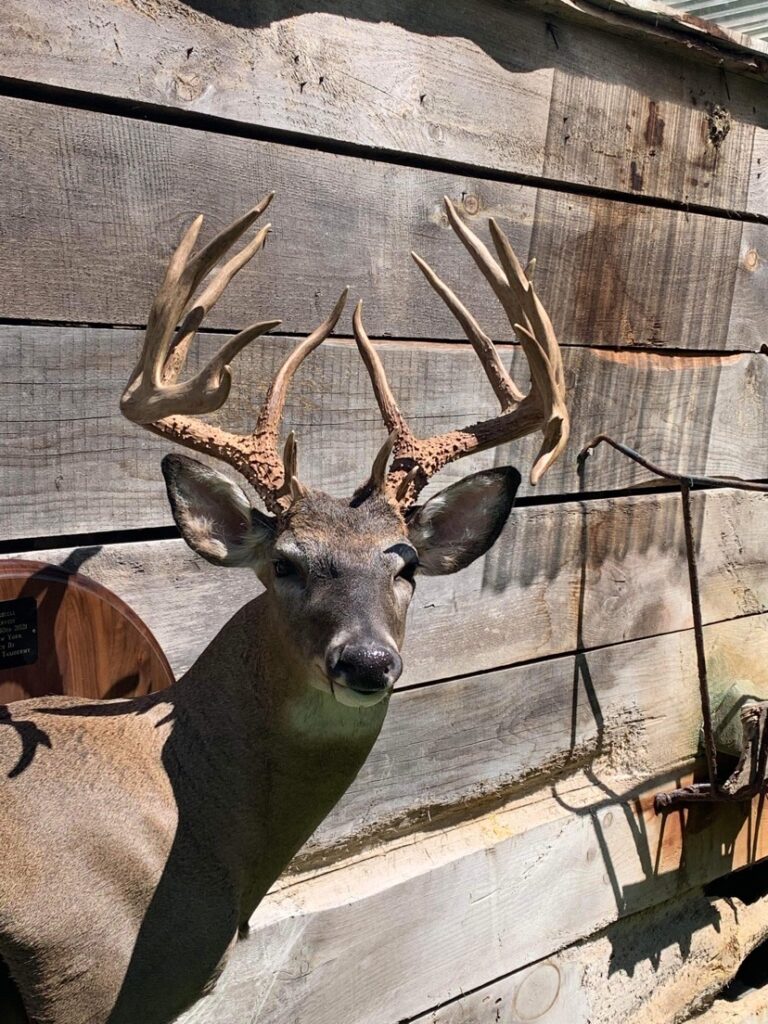In this review, I tested a classic broadhead that has been around forever… the Vortex.
I had been hearing about it for a long time and it’s been a staple in the market from the very beginning of mechanical broadheads.
For this test, I used my Bowtech SR6 set at 72 pounds and Bishop FOC King Arrows. I also used the Bishop FAD Eliminator, for the concrete test because they are just so durable. So let’s check out the Vortex 125 grain…
At the end of the review, I will post the score sheet, and give it an overall Lusk grade, so you can see how it did in each of the test and compare it to other broadheads.
The Vortex 125-Grain Broadhead
Let’s take a look at the Vortex 125-grain broadhead closeup…
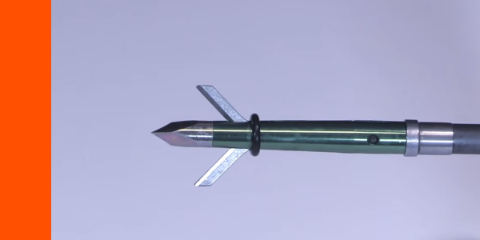
As you can see it’s just this classic mechanical, over-the-top deploying head. I really like the looks of it.
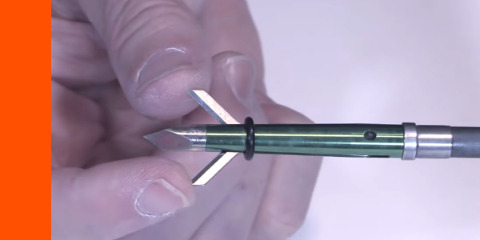
The blades in the closed position have 7/8″ cutting diameter. And, you can see they have the sharp edges going forward, so you’re going to get that cut initially. Plus, the chisel tip is going to put you at over an inch of cut. So, even if the blades didn’t open, you’d at least get that much cut.
The O-ring on the Vortex head is really stout. It rolls back and is reusable.
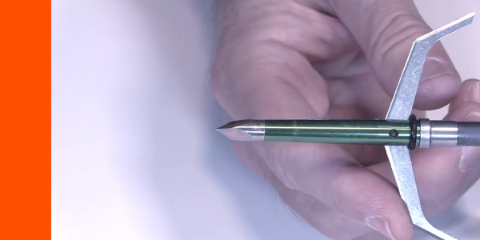
When the O-ring rolls back, the blades of the Vortex open up, expanding to a full 2-3/4″ of cut, which is one of the widest cuts on the market. Pretty cool!
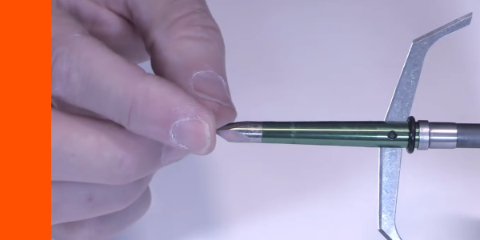
It has an aluminum ferrule as well as a really stout, strong-looking, steel chisel tip. The blades are 0.032″ thick and are made out of a spring steel to aid in their durability.
I was eager to put this head to the test and see how it performed.
-
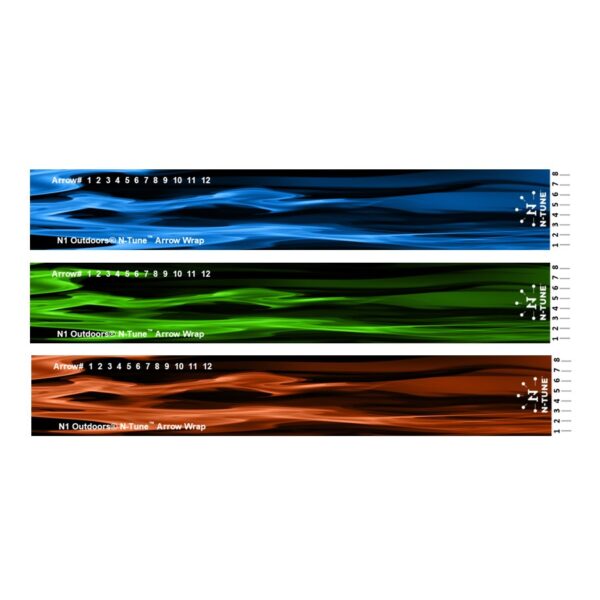
N1 Outdoors® N-Tune™ Nock Tuning Reflective Arrow Wraps – Smoke (Various)
Price range: $18.99 through $27.99 Select options This product has multiple variants. The options may be chosen on the product page -

N1 Outdoors® N-Tune™ Nock Tuning Reflective Arrow Wraps – Double Lunger™
Price range: $18.99 through $27.99 Select options This product has multiple variants. The options may be chosen on the product page -
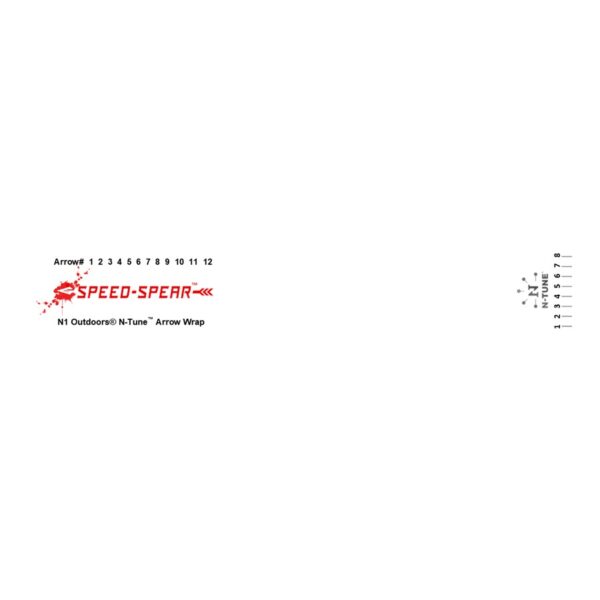
N1 Outdoors® N-Tune™ Nock Tuning Reflective Arrow Wraps – Speed Spear™
Price range: $18.99 through $27.99 Select options This product has multiple variants. The options may be chosen on the product page
Initial Sharpness Test
I tested the initial “out-of-the-box” sharpness of the Vortex 125 grain.
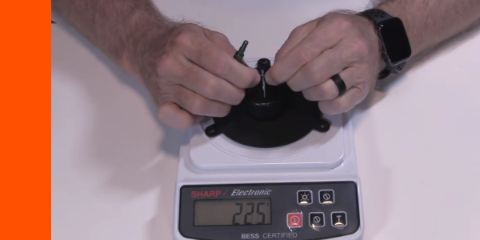
The initial sharpness of the Vortex came in at 225 (the lower the number, the sharper the blade is.)
Penetration Test #1 (2/3″ rubber mat, 1/2″ MDF, FBI Gel):
I shot the Vortex into ballistic gel, fronted by 1/2″ MDF and a 2/3″ rubber mat.
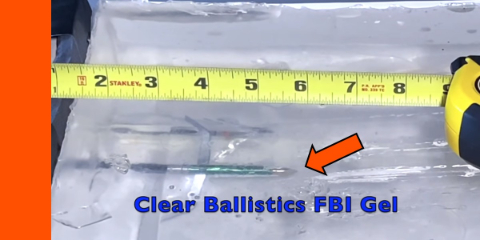
The Vortex 125 penetrated 6″.
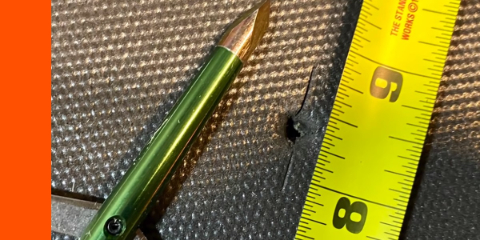
Here is the entrance hole and you see that it cut a one-inch cut through the initial layer of rubber foam mat.
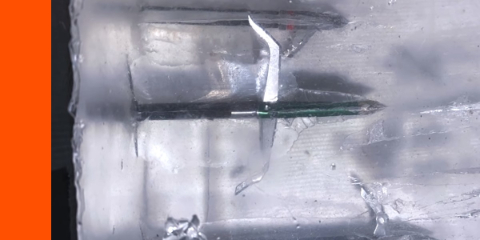
One inch later after the two layers of rubber foam mat and the MDF, you can see that the blades had opened up well over 2″.
Edge Retention Test (sharpness after Penetration Test 1):
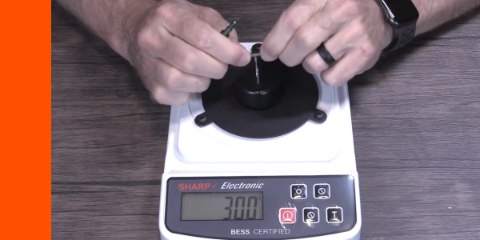
I tested the sharpness again after the MDF penetration test and the Vortex came in at 300.
Penetration Test #2 (layered cardboard):
I shot the Vortex into layered cardboard to see how many layers it would penetrate.
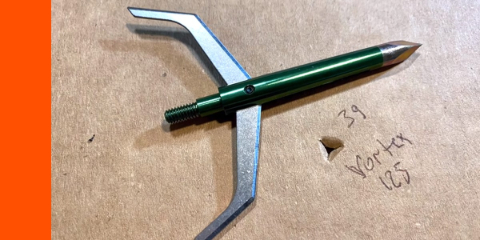
The Vortex broadhead penetrated through 39 layers of cardboard. And, just like some other long mechanicals, a lot of that penetration was the tip and not the blades. But, that’s how I count it, nonetheless.
Vortex Durability Test (1/2” MDF):
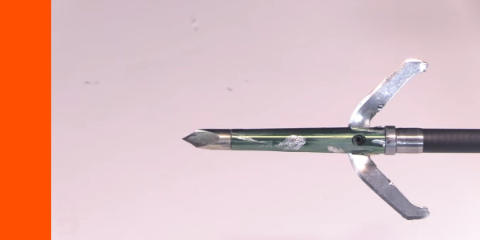
Here’s the Vortex head after going through the MDF 5 times. Now, I want to point out, you notice all the scratching on the ferrule itself… that’s not for the MDF. That’s from me trying to get it out of the MDF because on the fifth shot, it got like super lodged in there and I had to use a power saw to get it out. But, I was really careful to not bend the blades or the ferrule while I was getting it out, and that’s why I had to get so close like that. I’ve actually never had that problem, with it being so difficult to get out.
The ferrule held together fairly well. There was a little bit of wobble, which is not bad for such a long aluminum ferrule that had 5 impacts of the MDF. And, the tip obviously held together in excellent shape.
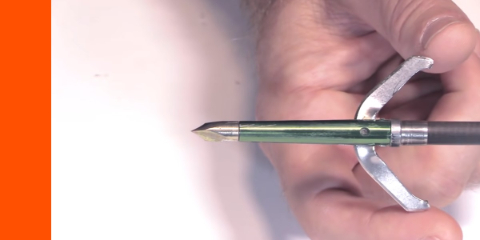
As for the blades… the extended part of the blades on either side broke off on then second shot into the MDF. However, I kept going because I still had well over 2″ of cut, which is significant. And, even if at the very end, after the fifth shot, as much as these blades had bent backwards and lost those end tips, there was still 2″ of cut.
-
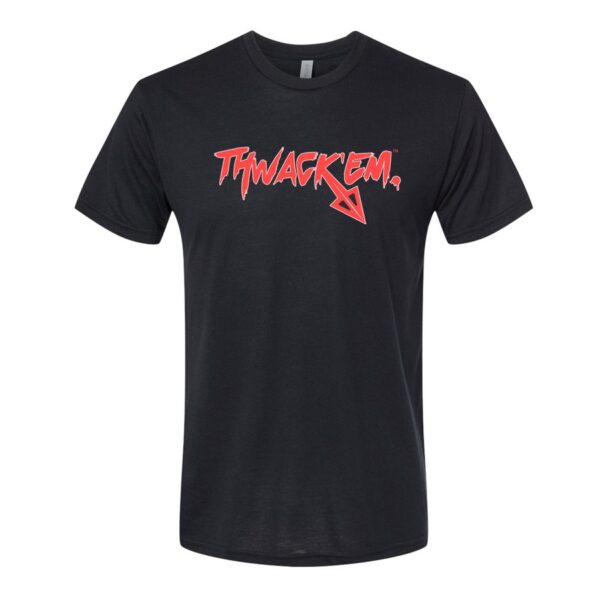
N1 Outdoors® Thwack’Em™ Bowhunting Tee
Price range: $24.99 through $30.99 Select options This product has multiple variants. The options may be chosen on the product page -
Sale!
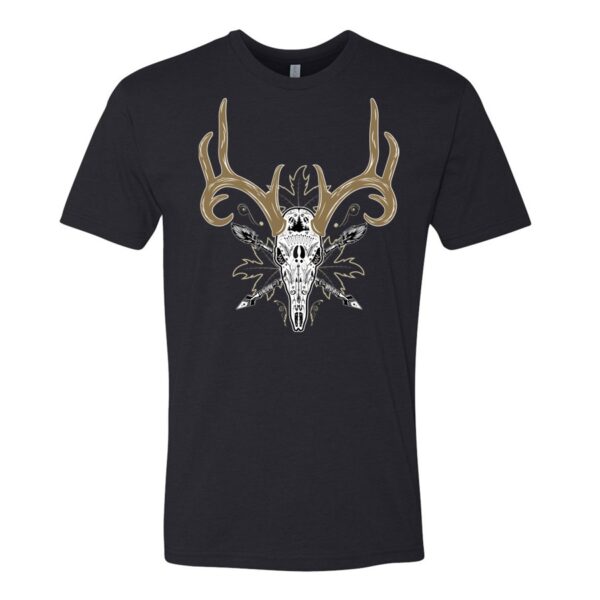
N1 Outdoors® Whitetail Sugar Skull Tee (Black/Columbia Blue)
$19.00 Select options This product has multiple variants. The options may be chosen on the product page -
Sale!
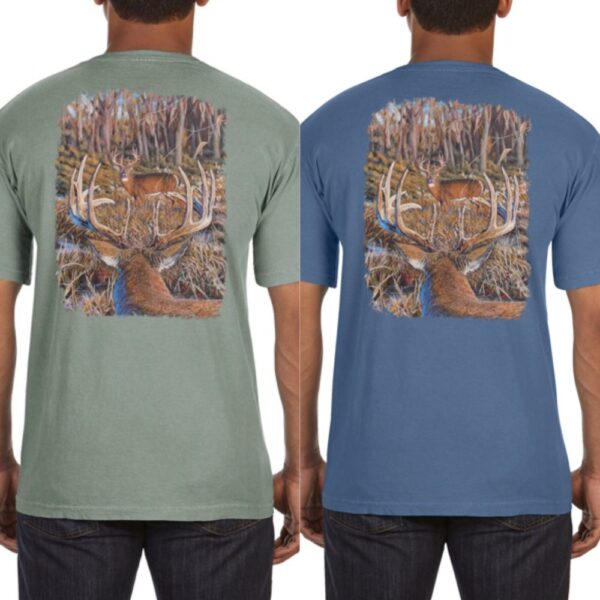
Ntruder Buck Tee by Daniel Cliburn
$9.00 Select options This product has multiple variants. The options may be chosen on the product page
So, it’s really significant that it still cut a lot of tissue, even with the bent blades, because the blades are so long. They got a bit bent and after those two broke off on the second shot, then they got a little bit more bent up on the third shot and on the fourth shot. And, then of course, the fifth shot.
So, the good side is, you still have 2″ of cut after 5 shots in the MDF. The bad side is, they did lose those ends to the blades and they did get a bit bent up there.
Concrete Test:
I shot the Vortex into a concrete block, which is extreme, but it helps show durability on extremely hard impact shots. Here’s the 125-grain after impact in the concrete.
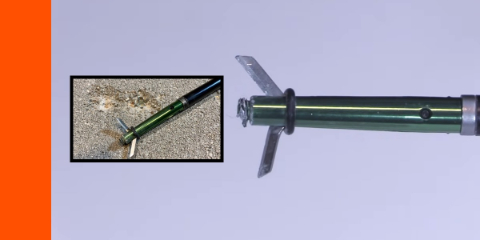
As you can see, the ferrule got pretty jacked up and bent. One of the blades also got bent. They both impacted the concrete a bit and one of them got bent back, while the other one didn’t. The tip really buried deeply in the concrete. It might be the deepest-penetrating tip that I’ve tested. I couldn’t get it out. And it broke off on impact. It broke off at the threading where it goes into the ferrule.
Now, when you’re shooting a broadhead with this wide of a cut, you have super wide blades, so you have to have a really long ferrule.
I know you won’t be shooting this head into concrete and you’re not expecting maximum durability. But, in this test, It actually performed a bit better than I expected it to.
Final Thoughts On The Vortex Expandable Broadhead
OK. So what do you think of the Vortex 125 grain?
You know, it did fairly well. For a really big cut like that, you’re not expecting the most durable broadhead in the world.
But, it actually exceeded my expectations in durability. Of course, you have the damage from the cinder block test and the damage in the center block and yeah, you see the damage in the MDF but that’s what a whooping big cut.
So if you got a really powerful setup or you’re going after a bit of a smaller animal like a turkey, a smaller deer, a hog, man, this is something really worth checking out because it’s going to put a whoop on whatever it hits.
Great job, Vortex!
